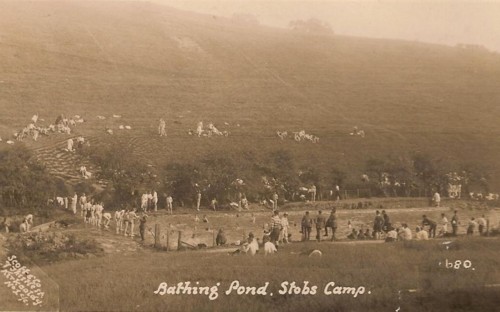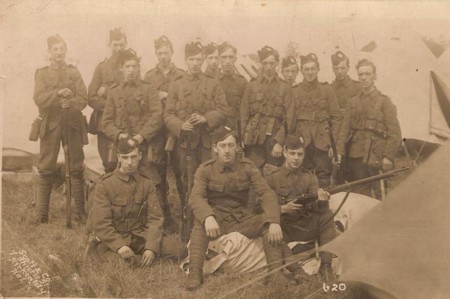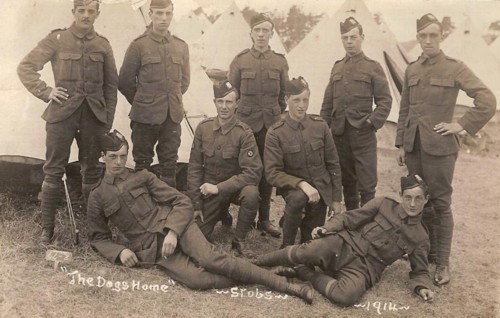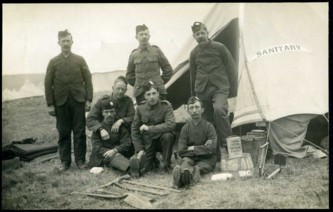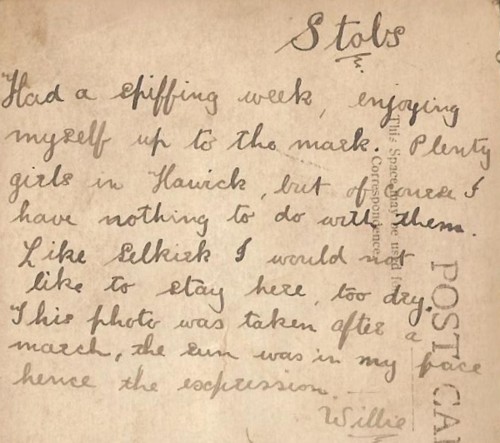BEGINNINGS
When the Stobs Estate of 10,000 acres, some four miles south of the town of
Hawick, in the Scottish Borders, came up for sale in 1902, the War Office purchased the property to provide further
training facilities for the British Army.
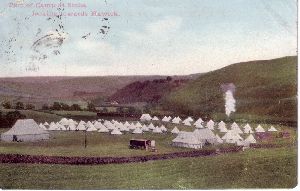
Construction of Stobs camp began in 1903.
A new railway siding was provided at Acreknowe farm off the main railway line, the Waverley Route, and a smaller gauge track was laid right up into the camp itself.
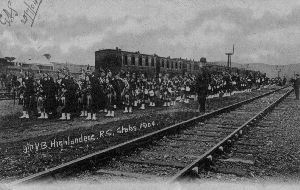
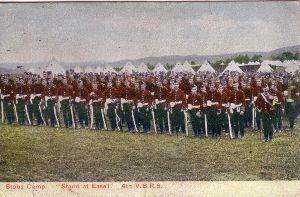
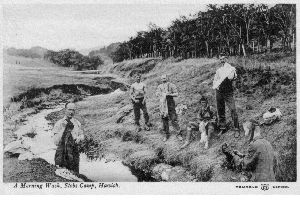
Several new buildings were erected such as an Officer's mess and Y.M.C.A. Institutes, but as it was accepted that Stobs was to be used mainly as a summer training ground, the troops were only provided with tents. The base commander and his staff were billeted in Stobs Castle.
The first troops began their training at Stobs in the summer of 1903 and by the end of July, over 20,000 men had used the facilities. Basically, the troops arriving were from the many volunteer units throughout the country, which before the Haldane Reforms of 1908, were the forerunners of the Territorial Army. At Stobs, they would do their annual fortnightly camp.
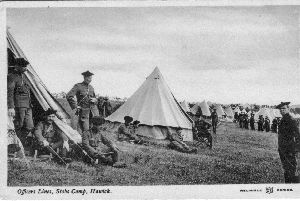
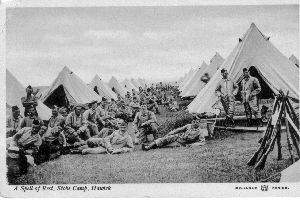
The new camp provoked mixed feelings amongst residents in the nearby town of Hawick. Local trade certainly received a welcome boost but a group of ten like-minded Hawick stalwarts were so concerned at the detrimental effect a large military camp could have on the town and its ancient traditions that they formed the Hawick Callants' Club in 1904.
The first year of Stobs Camp was tinged with tragedy as one of the local newspapers recorded:
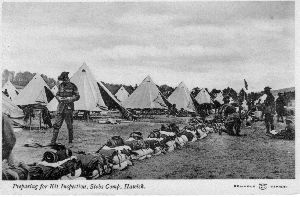
"HAWICK EXPRESS", AUGUST 21, 1903
CAMERON HIGHLANDER DROWNED AT STOBS
About half-past four on Wednesday morning the dead body of a soldier was observed by Margaret Crawford, housekeeper, Teviot Road, lying on Laidlaw's Cauld, and on the body being removed by the police it was discovered to be that of John Grant, a Private of the 1st Cameron Highlanders, who are at present stationed at Stobs.
From inquiries made it would appear that about 7 o' clock on the previous night Grant and another Cameron Highlander had been making their way from the Royal Highlander's camp to their own, and in doing so had to cross the Barnes Burn. By this time the heavy rains which had fallen that afternoon had brought down the little burn in a raging spate, and when the soldiers got to the footbridge between the field which was occupied by the Border Rifles and the Lancer's field, they found the water overflowing. They tried to cross further down at a narrow point where the burn flows through a ravine
Grant, instead of clearing, jumped into the water, but his companion got him out. The latter then jumped across, but he saw no more of Grant. He reported the matter to the military authorities and a prolonged search was made, but without avail, and the body was recovered as stated on Wednesday morning. The body must have been carried through remarkable narrow passes before it reached the Slitrig about Stobs woodfoot, and this shows the force with which the burn was running. Grant's head was badly cut and his clothes pretty much torn.
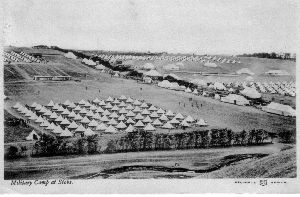
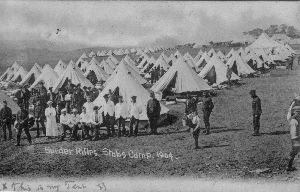
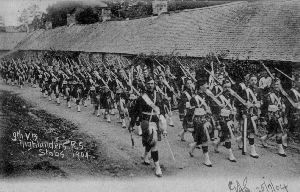
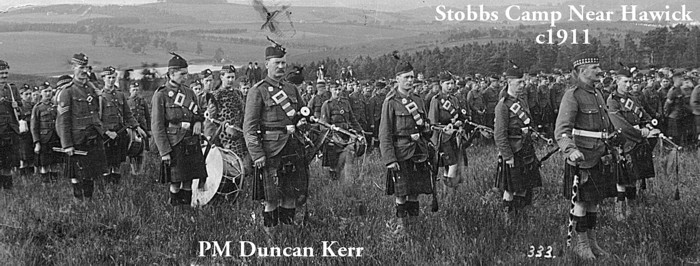
The photograph to the left and the 2 photographs below were kindly sent to me by Mr R.K.Smith.
His uncles served at Stobs @ 1911
Any information on the unit featured would be welcomed.
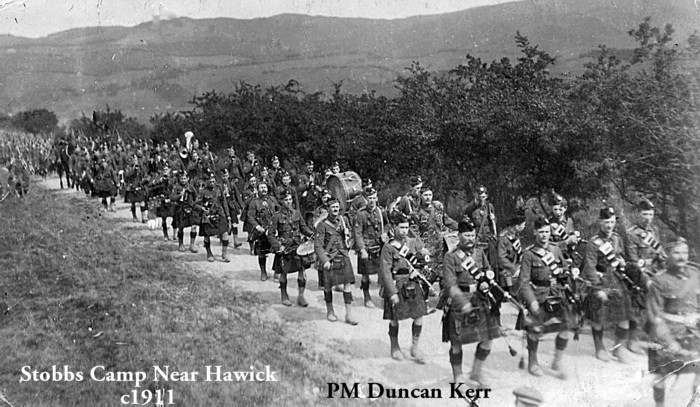
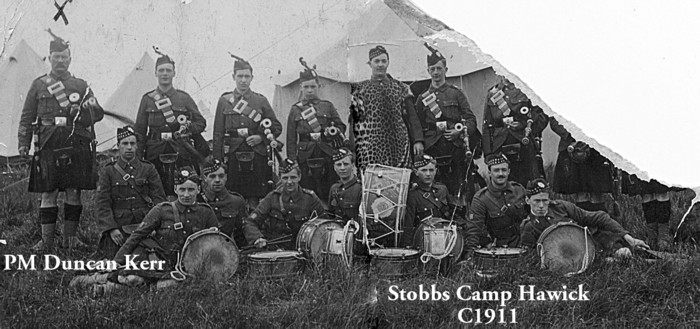
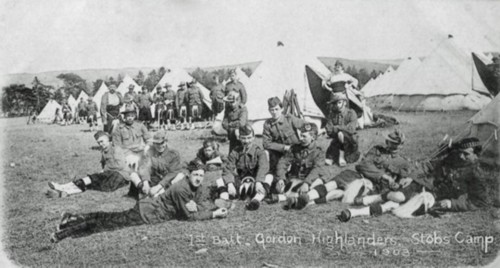
1st Battalion Gordon Highlanders at Stobs, 1903
(photo courtesy of Chris McDonald)
Regarding the above photographs, Ron Abbott wrote to tell me the following:
"The photos on your webpage featuring Pipe Major Duncan Kerr are when he was Pipe-Major
(Serjeant-Piper) of the 9th (Highlanders) Battalion, the Royal Scots.
That is the uniform that they are wearing in the photos dated c1911.
His regimental/service number was 221. His name was Duncan Alexander James Kerr.
He gets a mention in a number of newspaper articles circa 1900 to 1904.
I'm not sure how long he was Pipe Major of the 'Dandy 9th' but certainly from at least 1900 if not before and possibly
up to the outbreak of the Great War.
There are no Great War medal cards in his name/number so I am presuming that he had either transferred to a reserve
battalion/unit, or had left the army by then.
The National Archives do hold a document which appears to be dated January 1909 on which he is recorded as Serjeant-Piper
(e.g. Pipe-Major) of the 9th (Highlanders) Bn. Royal Scots.
Based on the newspaper archives of The Scotsman, the 9th Bn. were at Stobs camp in August 1903 and in July 1912.
Maybe other years as well. There are a number of other photographs however of the 9th Bn. at Stobs in 1912, which
is why I suspect the photos of P/M Kerr may have been taken that year. Pure speculation on my part however! "
This photograph was kindly sent by Shirley Murphy.
Her Grandfather, Magnus Hughson, is sitting bottom left.
The photo dates from 1905 and probably shows men of a Royal Scots volunteer battalion at their summer camp at Stobs.
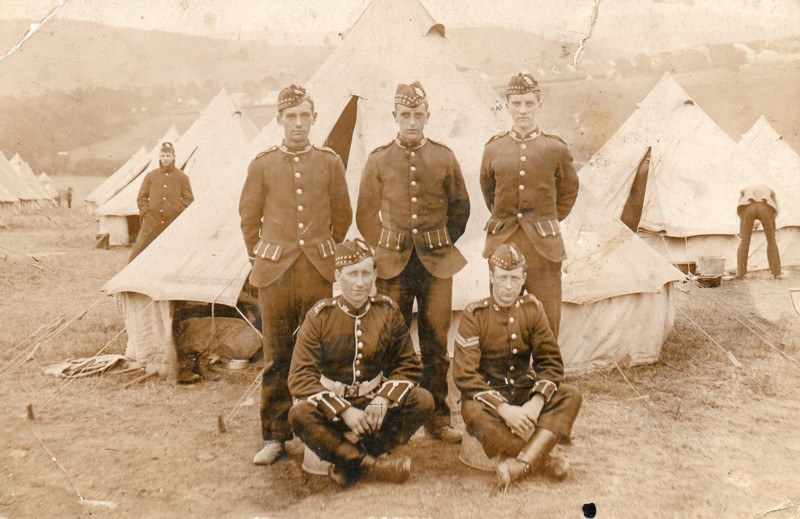
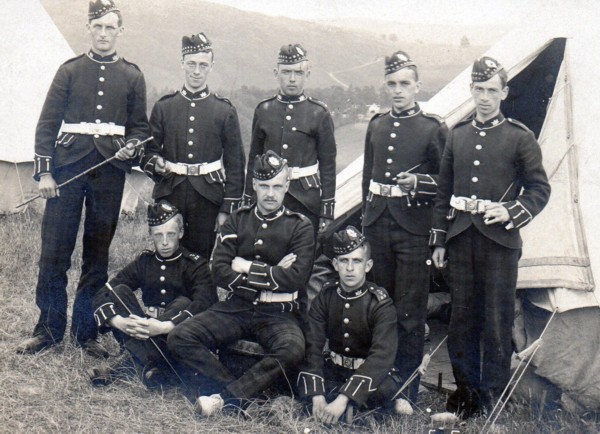
The photograph to the left was kindly sent by Duncan L. McGregor.
His Grandfather, Duncan McGregor, is standing at the extreme right. Duncan went to France in 1915 to operate gas cylinders as he was a chemist to trade.
The photo is undated but is possibly from 1905-05.
.jpg)
.jpg)
This postcard was sent to a Mr J Dawson at 11 Wood Street, Galashiels.
It shows members of the local 1/4th Bn. KOSB at camp at Stobs in July 1910.
Photos courtesy of Alan Wicker.
The 5th Bn. Royal Scots at Stobs in late July 1914, just days before the start of the Great War
